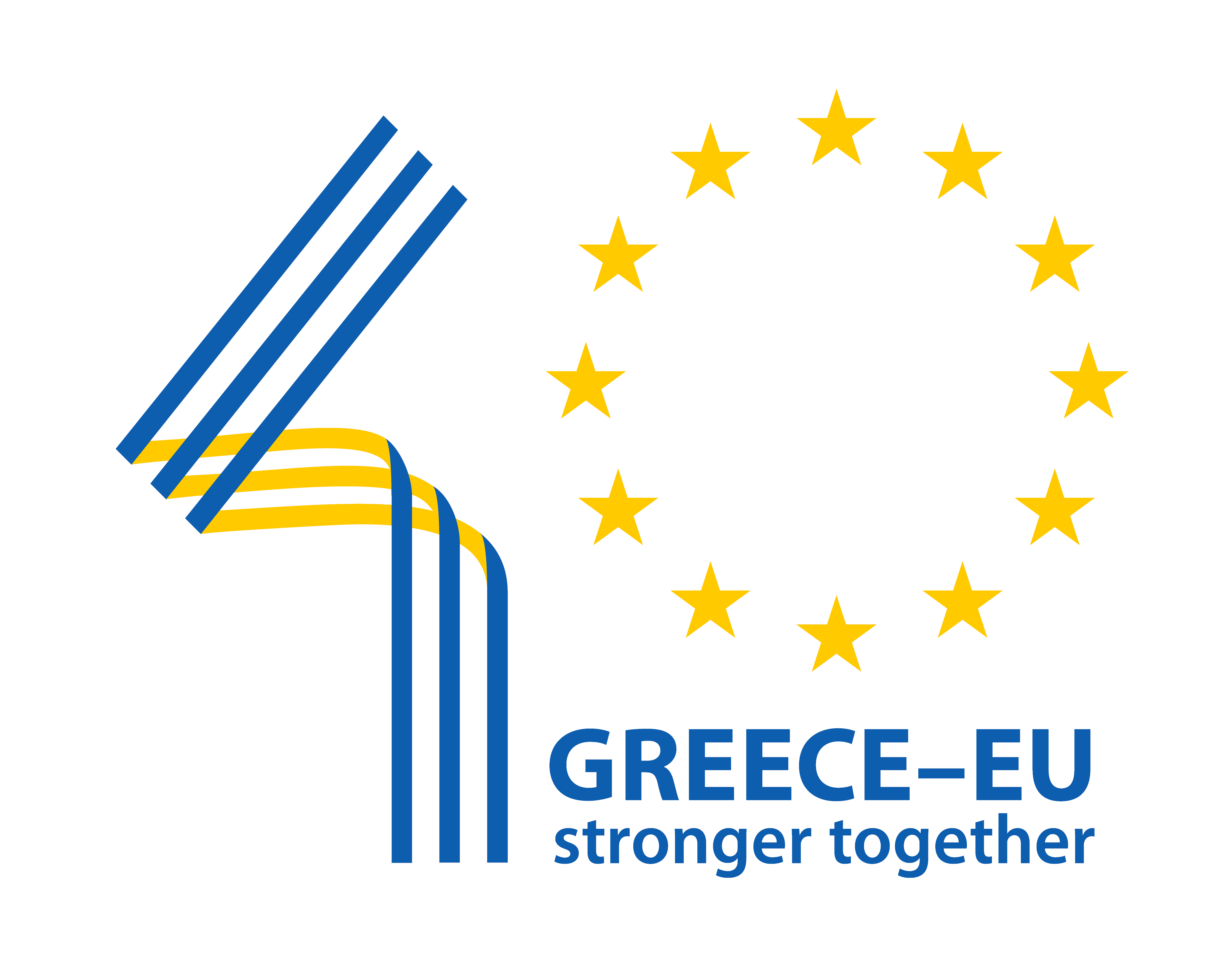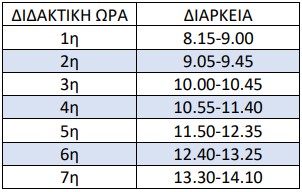ΤΗΣ 2ΗΣ ΕΝΟΤΗΤΑΣ ΤΗΣ ΔΙΑΠΟΛΙΤΙΣΜΙΚΗΣ ΕΚΠΑΙΔΕΥΣΗΣ
ΣΤΟ ΣΧΟΛΕΙΟ ΜΑΣ
DISSEMINATION
OF THE 2nd TRAINING MODULE IN THE GREEK SCHOOL REPORT
Την Τρίτη 15/5, κατά τις δύο πρώτες σχολικές ώρες, πραγματοποιήθηκε η διάχυση των αποτελεσμάτων της επιμόρφωσης που παρακολούθησαν έξι μαθητές/-τριές μας στο Chateau-Tierry της Γαλλίας στο πλαίσιο του Ευρωπαϊκού προγράμματος Erasmus+ KA2 “My involvement as a European with refugee children”. Μετά την πρώτη διασχολική συνάντηση της Θεσσαλονίκης, που αφορούσε την κουλτούρα καθεμιάς από τις συμμετέχουσες χώρες και τη σύγκρισή τους (Τίτλος ενότητας: «Our own culture/ Comparison of cultures»), το θέμα της δεύτερης διασχολικής συνάντησης, καθώς και της ενότητας που αποτέλεσε αντικείμενο της επιμόρφωσης, ήταν η διαπολιτισμική επικοινωνία (τίτλος της ενότητας:“Intercultural communication”). Από το πλούσιο επιμορφωτικό υλικό των τριών ημερών επιμόρφωσης οι μαθητές μας επέλεξαν δύο παιχνίδια, το «Οδηγός ταξί-επιβάτης” και το «Παιχνίδι με τις καρέκλες» (ακολουθεί περιγραφή τους στο αγγλικό κείμενο), που στόχο είχαν να τονίσουν τους αναγκαίους όρους μιας επιτυχούς επικοινωνίας και την αναγκαιότητα της συνεργασίας για την εκπλήρωση των στόχων ενός ατόμου ή μιας ομάδας. Μετά την πραγματοποίηση των παιχνιδιών ακολούθησε παρουσίαση της επιμόρφωσης στη Γαλλίας συνολικά και συζήτηση πάνω στα αίτια επιτυχίας ή αποτυχίας των στόχων των δυο παιχνιδιών, της επιτυχίας ή αποτυχίας, τελικά, κάθε επικοινωνίας. Η διάχυση έγινε σε είκοσι πέντε μαθητές/-τριες του σχολείου.
Φωτογραφίες από τη διάχυση μπορείτε να δείτε εδώ:
https://animoto.com/play/Lq0m2g77FpG3SOA0DCR3Ew
DISSEMINATION OF THE 2nd TRAINING MODULE IN THE GREEK SCHOOL
REPORT
Taxi driver-Passenger
-
Goals: The main goal was to try and transfer to our fellow students both our experiences and knowledge that we gained during the students-exchange program “Erasmus”. To begin with, we thought it best to stress the importance of honest communication in our lives and the difficulties one could face when trying to achieve it, through an experiential game. We further tried to raise concern as to the way we usually approach a problem, and whether there are alternative solutions rather than holding on to the first reaction of frustration. More specifically, we chose this game, keeping in mind that our audience was consisted of students of our age, and therefore it had to be interesting, possibly able to raise irritation and generally keeping them on the edge of their seat. In order for the game to be considered a total success, something which never really happens, due to very nature of it, the participants ought to get passed the distractions and manage to communicate with their partners, to achieve their goal. In the end, the students understand that this is the way we should also act in our lives.
-
Description of the game: Starting, all students are divided into pairs, sitting back to back on their chairs, one being the “passenger” and the other the “taxi driver”. The game is split in two stages.
1st Stage : A map showing the same area is handed to both of them. The one that is given to the taxi driver has only the spot from where he has to start, while the other one has the route leading to a destination, where the passenger wants to go to. The latest is asked to describe this route with as much accuracy as he can, without showing his map to his partner, so that he can draw it on his. The main difficulty in this stage is the fact that the taxi driver is not allowed neither to ask for clarification, nor to speak to the passenger in general. After about 10-15 minutes everyone is asked to put their pens down and compare the original route to the one the driver finally drew.
2nd Stage: A similar process is followed in the next stage, with the difference that the driver can now speak to his passenger. There’s also a twist here in the maps for which the players were intentionally not informed about; the two maps are not identical, as they were before, but they now are made mirror-like.
After the game a discussion was held based on what the participants just experienced and their thoughts on it, and later on we introduced to them a communication model called “Shannon and Waiver”, and shared our knowledge on the subject.
-
Observations/Notes: One important remark for the success of this experiment is the bilateral cooperation of the participants and the coordinators. If this cannot be achieved the whole process loses its purpose. A reasonable fuss, however, is understandable and moreover desirable, as it makes easier the explanation of the model mentioned above. During the game, interesting was the fact that some of the players, whilst having an opinion of their own about the questions asked, preferred not to share them with the rest of the group, but instead discuss them on private conversations with the students sitting near them. Another worth mentioning observation we made was that the majority of the participants, driven by their will to win or by their frustration, occurred due to the difficulties they faced, cheated by showing their map to their partner. Last but certainly not least, during the discussion no one seemed to admit that their failure was due to their own lack of communication with their partner and ability to translate the message they were reaching, when many blamed it on the game being “impossible” to play with success.
-
Comments from the trainees group
The conclusion that we came to after playing the game was quite obvious from the start, but I think it was well chosen since it reflected reality. We also found interesting the fact that it included two phases, because it showed that even when the second time one of the communicating problems was solved, some others appeared and the difficulty in understanding the other person continued to exist. Generally, the training group made a good job in explaining how to play the game and what we needed to learn from it.
-
Amendments: Better preparation, by bringing markers and schoolborads, and assign responsibilities close to each ones’ character.
The game with the chairs
Description of the game
In the room where the game is about to take place, there is a line with tape which supperates the room in two sides. On the first side of the room there are a lot of chairs. The students who participate at the game are getting devided in three teams. In every team is given a secret mission which must be completed to win the game.
The missions are:
-
All the chairs must touch each other
-
All the chairs must be turned upside down
-
All the chairs must be moved to the other side of the tape
Purpose of the game
The members of each team have to understand that the three objectives that were given to them can happen all at once.
If they do not then none of then will be able to achieve their goals since thete will be a chaos.
The reason we chose this game-our purpose-conclusions
We chose this game because we farmly believe that is the simpliest way to represent our society. It is an experiental game which shows exactly the relationships are more competitive than cooperative. Our purpose was the students who participated to learn that without understanding the other people amd what they want to manage with their actions,students won’t be able to achieve anything. While the students were playing the game every team focusef on their own mission and they were destroying the job of the other teams. All teams could have won if they were discussing all together. A miniature of our society. The limited time was a part of the game since our society doesn’t give you time either.


















